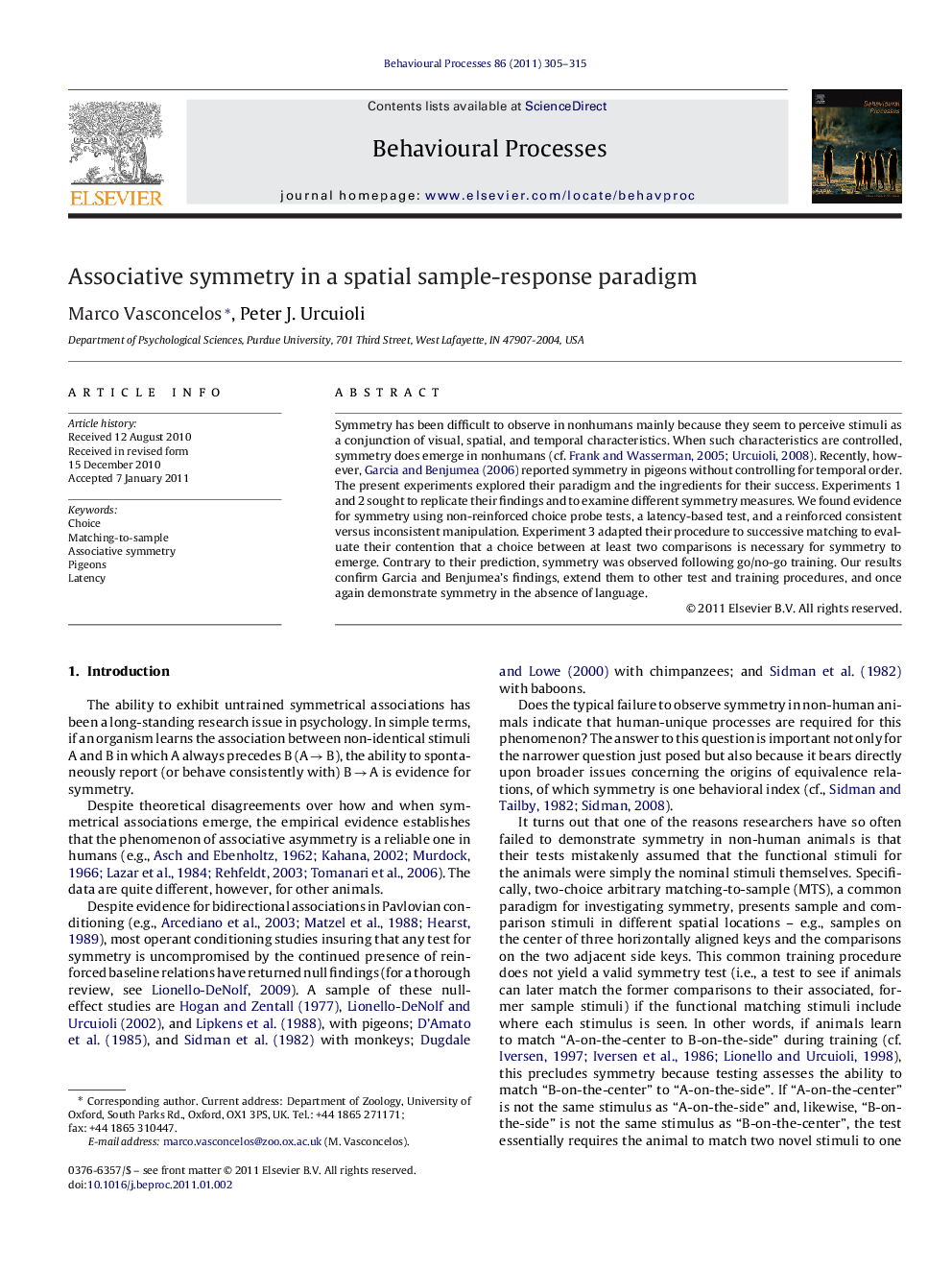| کد مقاله | کد نشریه | سال انتشار | مقاله انگلیسی | نسخه تمام متن |
|---|---|---|---|---|
| 2427330 | 1105956 | 2011 | 11 صفحه PDF | دانلود رایگان |

Symmetry has been difficult to observe in nonhumans mainly because they seem to perceive stimuli as a conjunction of visual, spatial, and temporal characteristics. When such characteristics are controlled, symmetry does emerge in nonhumans (cf. Frank and Wasserman, 2005 and Urcuioli, 2008). Recently, however, Garcia and Benjumea (2006) reported symmetry in pigeons without controlling for temporal order. The present experiments explored their paradigm and the ingredients for their success. Experiments 1 and 2 sought to replicate their findings and to examine different symmetry measures. We found evidence for symmetry using non-reinforced choice probe tests, a latency-based test, and a reinforced consistent versus inconsistent manipulation. Experiment 3 adapted their procedure to successive matching to evaluate their contention that a choice between at least two comparisons is necessary for symmetry to emerge. Contrary to their prediction, symmetry was observed following go/no-go training. Our results confirm Garcia and Benjumea's findings, extend them to other test and training procedures, and once again demonstrate symmetry in the absence of language.
Research highlights▶ Pigeons prefer symmetrical versions of baseline matching relations. ▶ Pigeons peck faster to symmetrical versions of baseline matching relations than to non-symmetrical ones. ▶ Pigeons learn symmetrical versions of baseline matching relations faster than non-symmetrical ones.
Journal: Behavioural Processes - Volume 86, Issue 3, March 2011, Pages 305–315